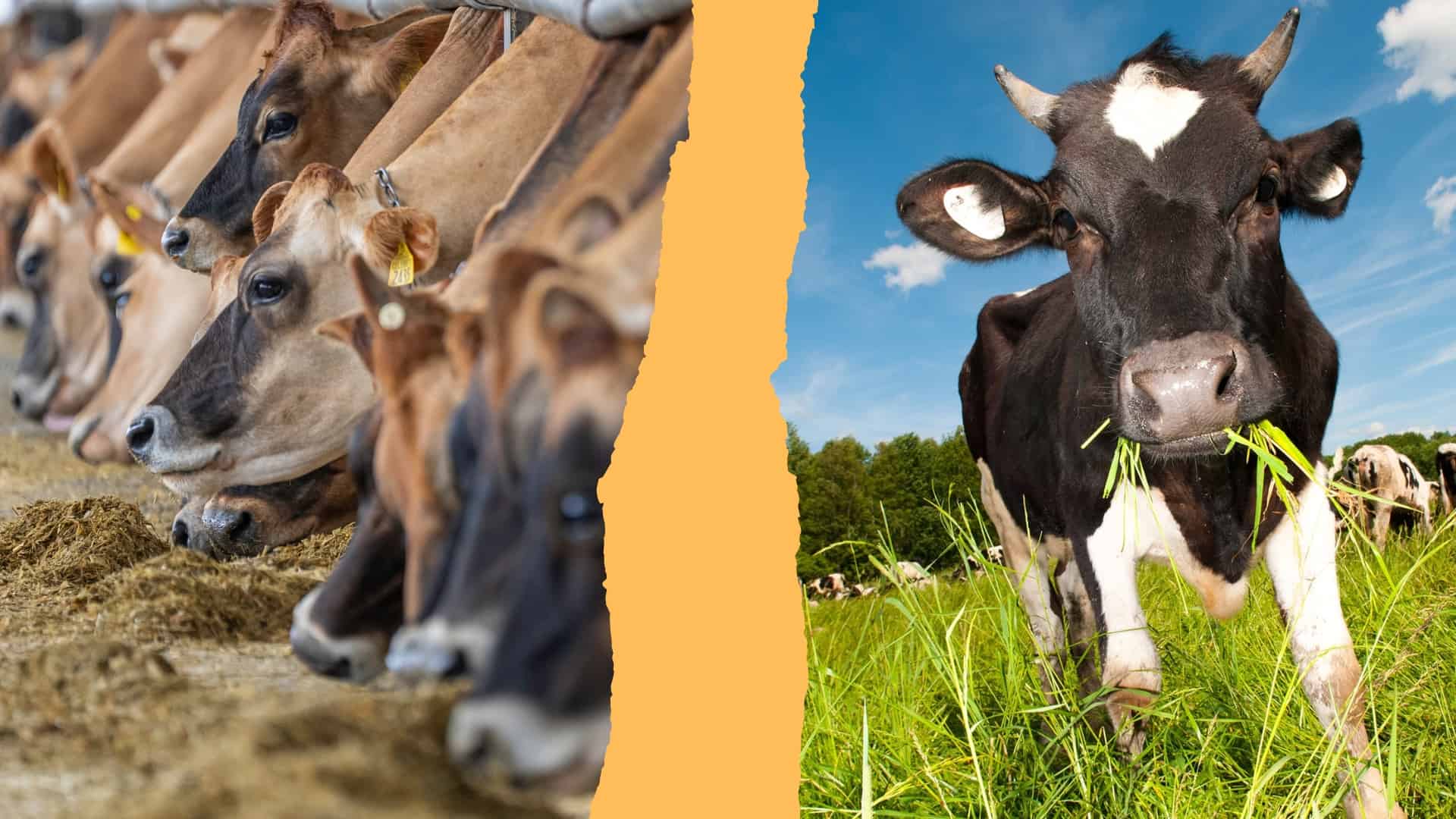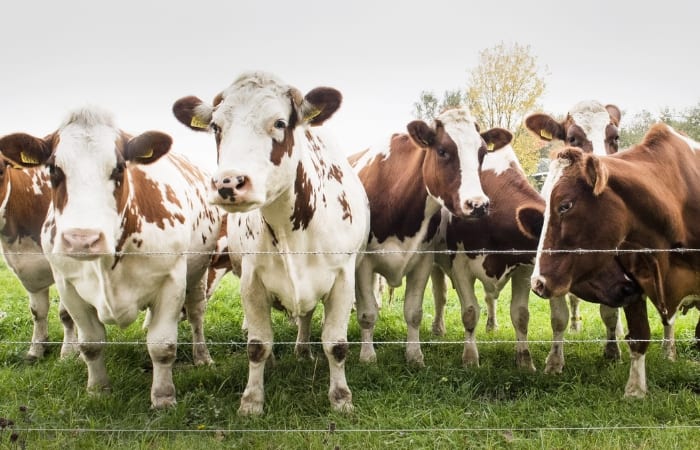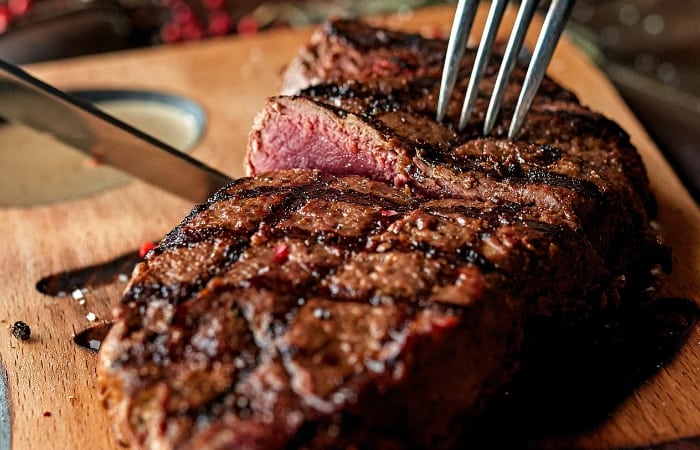Beef is a popular meat enjoyed by people worldwide. Many people opt for grass-fed beef over grain-fed beef because of its perceived health benefits, such as being leaner and containing more nutrients. However, one question that often arises is whether grass-fed beef smells different from grain-fed beef. In this article, we’ll explore the science behind why grass-fed beef may have a different odor, as well as the various factors that can affect the smell of grass-fed beef.

Grass-fed beef comes from cattle that graze on grass and other forage, while grain-fed beef is produced from cattle that are fed grain, such as corn, as their primary food source. While both types of beef are derived from cows, the way they are raised and fed can affect their taste, texture, and smell.
Brief History of Grass-Fed Beef
Grass-fed beef has been around for centuries, with early civilizations in Europe and Asia relying on grazing animals for their meat supply. In the United States, grass-fed beef was the primary source of beef until the 1950s, when grain-fed beef became more popular due to its efficiency and affordability.
Importance of Smell in Determining Meat Quality
The smell of meat is an essential aspect of determining its quality. A pleasant smell is usually associated with fresh meat, while a rancid odor may indicate that the meat is spoiled or past its prime. The smell of meat can also provide information about its flavor and tenderness.
What Makes Grass-Fed Beef Smell Different?
Differences in Diet
One reason why grass-fed beef may smell different from grain-fed beef is because of differences in the animal’s diet. Cows that consume grass and other forage have a more diverse diet than those fed solely on grain. The unique blend of nutrients and phytochemicals in grass and forage can impact the smell and taste of the meat.
Composition of Fat
Another factor that can impact the smell of grass-fed beef is the composition of its fat. Grass-fed beef is often leaner than grain-fed beef, and the fat in grass-fed beef has a higher proportion of polyunsaturated fatty acids (PUFAs) than grain-fed beef. PUFAs can oxidize more easily than other types of fat, which can contribute to a different odor.
Exercise and Movement
Grass-fed cattle also tend to move around more than grain-fed cattle, which can impact the smell of the meat. Exercise can affect the composition of the animal’s muscle tissue, as well as the level of stress hormones, which can influence the smell and taste of the meat.
Processing Methods
Processing methods can also impact the smell of grass-fed beef. Some processing techniques can mask the natural aroma of the meat, while others can enhance or intensify it. For example, aging or dry-aging beef can enhance its natural flavors and aromas.
The Science Behind the Smell
The science behind the smell of grass-fed beef is complex and involves a variety of chemical compounds that contribute to its unique aroma.
Role of Omega-3 Fatty Acids
One key factor that contributes to the smell of grass-fed beef is the presence of omega-3 fatty acids. These are essential fatty acids that are abundant in grass and other plant-based foods, and are converted by the animal into a range of different compounds, including aldehydes and ketones. These compounds can give the meat a fresh, grassy smell that is characteristic of grass-fed beef.

Influence of Conjugated Linoleic Acid
Another important compound that can affect the smell of grass-fed beef is conjugated linoleic acid (CLA). This is a type of fatty acid that is found in higher concentrations in grass-fed beef than in grain-fed beef, and has been linked to a range of health benefits. CLA can contribute to the aroma of grass-fed beef by reacting with other compounds in the meat to produce a range of volatile organic compounds that give the meat a distinctive scent.
Importance of Carotenoids
Carotenoids are pigments that are found in grass and other plant-based foods, and are responsible for the yellow and orange color of many fruits and vegetables. When cattle consume grass that is high in carotenoids, these pigments are deposited in the fat of the animal, where they can contribute to the color and aroma of the meat. Carotenoids have been shown to have a sweet, fruity aroma that can add complexity to the smell of grass-fed beef.
Connection to Grass Terpenes
Finally, grass-fed beef can also contain a range of other compounds that are produced by the plants that the animal has consumed. One of these groups of compounds is terpenes, which are aromatic compounds that are found in many plants, including grass. These compounds can contribute to the unique scent of grass-fed beef, and can also have a range of other health benefits.
Grass-Fed Beef vs. Grain-Fed Beef
One of the most significant differences between grass-fed beef and grain-fed beef is their diets. Grass-fed cattle eat a natural diet of grass and forage, while grain-fed cattle are typically fed a diet of corn and other grains. This difference in diet has a significant impact on the taste, texture, and nutritional value of the meat.
Key Differences in Smell
The smell of grass-fed beef is often described as earthy and slightly sweet, while the smell of grain-fed beef is often described as more neutral. This is because grass-fed cattle consume a wide variety of grasses and other forage, which can affect the flavor and aroma of their meat. Grain-fed cattle, on the other hand, are typically fed a more uniform diet of corn and other grains, which can result in a less complex flavor profile.
Comparison of Nutritional Value
Grass-fed beef is often considered to be more nutritious than grain-fed beef. Grass-fed beef is typically leaner and contains more omega-3 fatty acids, conjugated linoleic acid (CLA), and antioxidants such as carotenoids. These nutrients have been linked to a range of health benefits, including reduced inflammation, improved heart health, and a lower risk of certain types of cancer.
Environmental and Ethical Impacts
Grass-fed beef is also more environmentally sustainable and ethical than grain-fed beef. Grass-fed cattle require less grain and other resources to produce, which results in a lower carbon footprint. Additionally, grass-fed cattle are typically raised in more humane and ethical conditions than grain-fed cattle, as they are allowed to graze and move around more freely.
Factors that Affect the Smell of Grass-Fed Beef
There are several factors that can affect the smell of grass-fed beef, including the animal breed, age of the animal, time of year, and cooking method.
Animal Breed
Different breeds of cattle can produce different smelling meat. For example, Angus cattle are known for producing beef that has a rich, buttery aroma, while Hereford cattle have a more earthy, herbaceous scent. This is because the genetics of the breed can influence the composition of the fat in the meat.
Age of the Animal
The age of the animal at the time of slaughter can also affect the smell of the meat. Older animals tend to have a stronger aroma due to the accumulation of fat and other compounds in their tissues. Younger animals, on the other hand, have a milder aroma that is more delicate and less overpowering.
Time of Year
The time of year that the animal is slaughtered can also have an impact on the smell of the meat. In the spring and summer months, when grass is more abundant and lush, the meat may have a fresher, more vibrant scent. In the fall and winter, when the grass is drier and less plentiful, the meat may have a more subdued aroma.
Cooking Method
The way in which the meat is cooked can also affect its smell. Grilling and roasting can bring out the natural flavors and aromas of the meat, while boiling or stewing can sometimes mask or alter the scent. Additionally, overcooking the meat can cause it to become dry and lose some of its aroma.

Overall, these factors all play a role in determining the smell of grass-fed beef, and it is important to consider them when selecting and preparing the meat. By understanding these factors, consumers can make informed decisions about the quality and characteristics of the meat they are purchasing and consuming.
Smell Testing Grass-Fed Beef
When it comes to testing the quality of grass-fed beef, one of the most important factors is the smell. To identify off odors, it is important to use your sense of smell and trust your instincts. A strong, unpleasant smell can be a sign that the meat is spoiled or past its prime.
Best Practices for Smelling Meat
To get the most accurate read on the quality of your grass-fed beef, it is important to follow some best practices when it comes to smelling meat. This includes smelling the meat before you purchase it, checking the expiration date, and using your sense of smell to detect any off odors.
Tips for Choosing High-Quality Grass-Fed Beef
When shopping for grass-fed beef, there are a few key tips to keep in mind to ensure that you are getting the best quality meat possible. Look for beef that is labeled as 100% grass-fed, choose cuts that are well marbled and have a bright red color, and opt for meat that has been aged for at least 21 days.
Cooking Grass-Fed Beef
When it comes to cooking grass-fed beef, there are some key tips to keep in mind to ensure that you get the best flavor and texture possible. One important factor is to cook the meat slowly and at a lower temperature, as grass-fed beef can be leaner and more prone to drying out. Another tip is to use marinades or rubs to add flavor and moisture to the meat.
Preparing the Meat
Before cooking your grass-fed beef, it is important to properly prepare the meat. This includes bringing the meat to room temperature before cooking, seasoning it with salt and pepper, and properly storing any leftovers.
Cooking Techniques
There are a variety of cooking techniques that work well with grass-fed beef, including grilling, roasting, and slow cooking. It is important to choose the right cooking method for the cut of meat you are working with and to adjust your cooking time and temperature accordingly.
Flavor Profiles
Grass-fed beef has a unique flavor that is often described as earthy, slightly sweet, and slightly gamey. This is due to the animal’s diet, which includes a variety of grasses, clovers, and other forage. The flavor can be enhanced by using simple seasoning, such as salt and pepper, or more complex marinades that complement the meat’s natural taste.
The Future of Grass-Fed Beef
As more consumers become concerned about the health and environmental impacts of their food choices, grass-fed beef is likely to continue to grow in popularity. In addition to being more nutritious and sustainable than grain-fed beef, grass-fed beef has a unique taste that many consumers find appealing.

Consumer Demand
Consumer demand for grass-fed beef is expected to continue to increase in the coming years. According to a study by the Agricultural Marketing Resource Center, sales of grass-fed beef in the United States have increased by an average of 25-30% per year over the past decade. This trend is expected to continue as more consumers become aware of the benefits of grass-fed beef.
Sustainability and Environmental Benefits
Grass-fed beef is more sustainable and environmentally friendly than grain-fed beef. Because grass-fed cattle require less grain, water, and other resources to produce, they have a lower carbon footprint than grain-fed cattle. Additionally, grass-fed cattle help to promote soil health and reduce the need for synthetic fertilizers and pesticides.
Future Research
There is still much to learn about the benefits of grass-fed beef. Future research could focus on the impact of grass-fed beef on human health, the nutritional composition of grass-fed beef, and the environmental benefits of grass-fed beef production.
Conclusion
In conclusion, grass-fed beef does smell different than grain-fed beef due to factors such as diet, exercise, and processing methods. The unique smell and flavor of grass-fed beef can be enhanced by using simple seasoning or more complex marinades.
Consumers can identify high-quality grass-fed beef by paying attention to the animal breed, age, time of year, and cooking method. As consumer demand for sustainable and nutritious food continues to grow, grass-fed beef is likely to become an increasingly popular choice.




